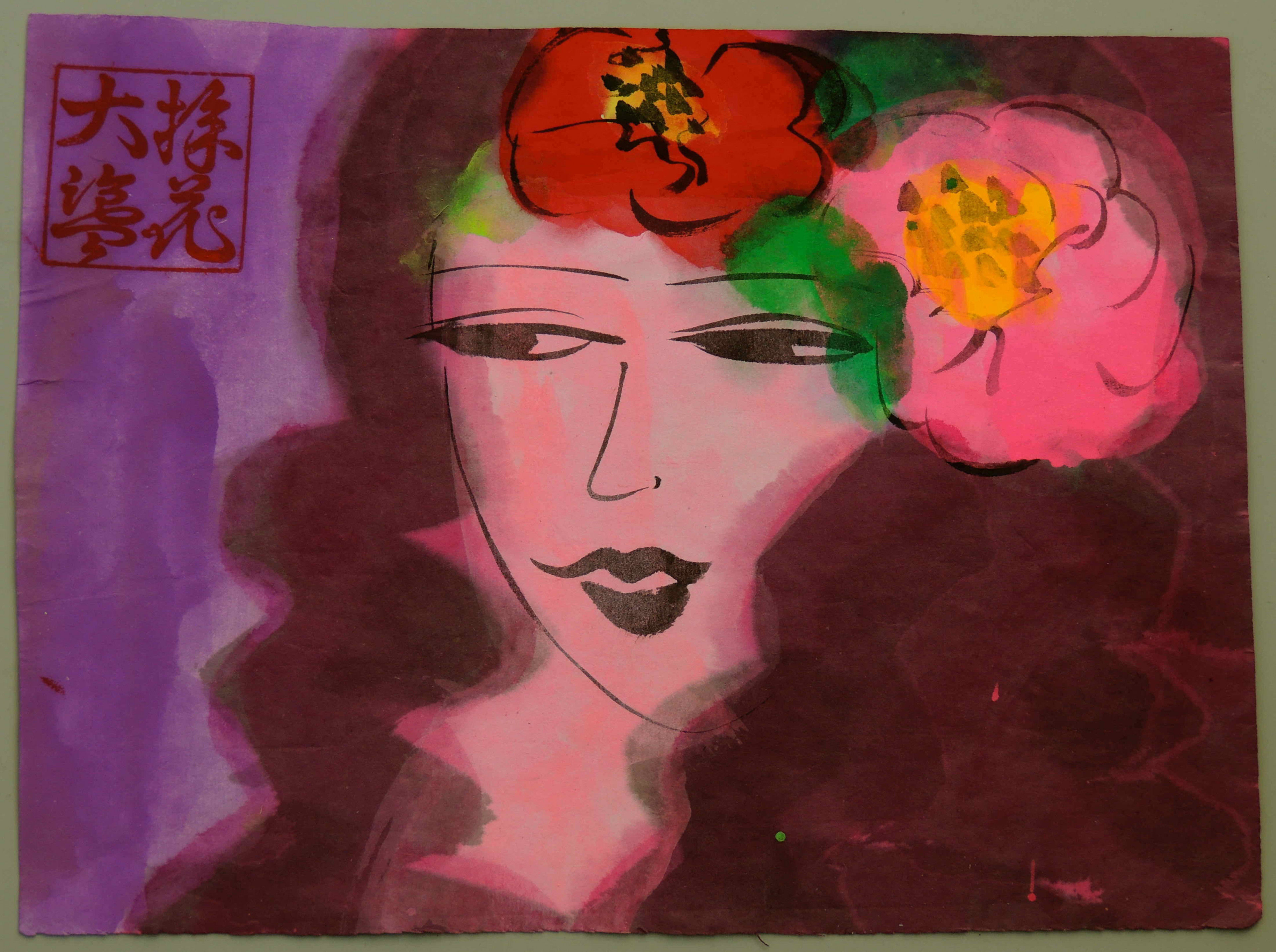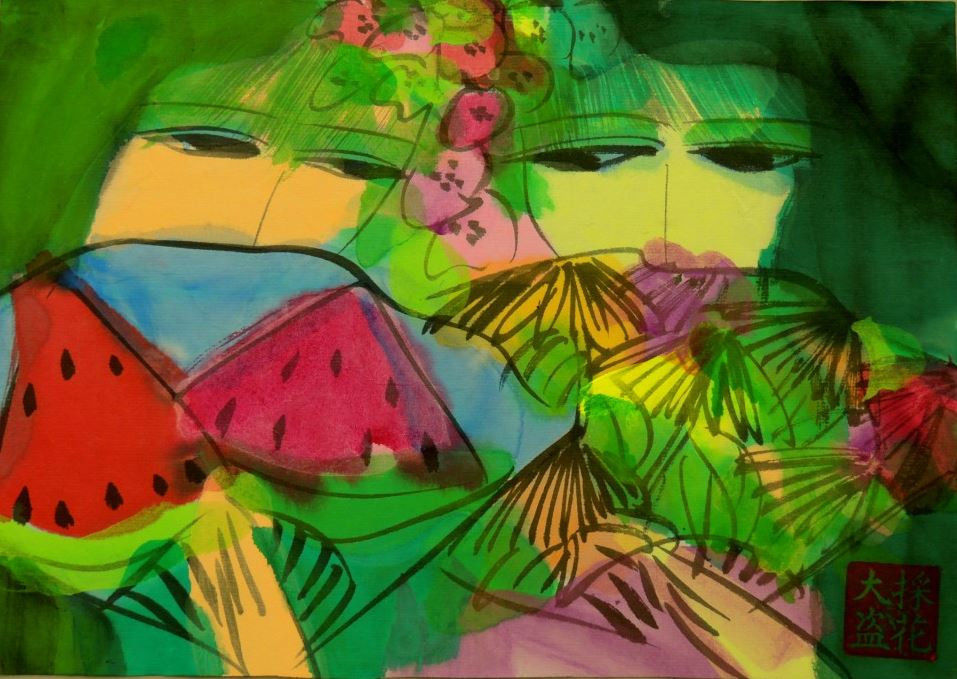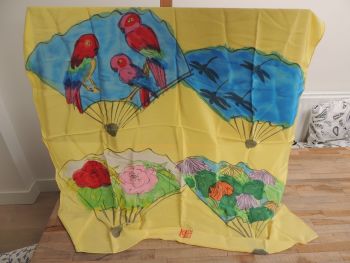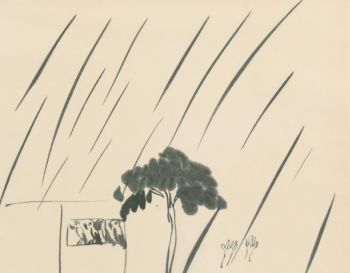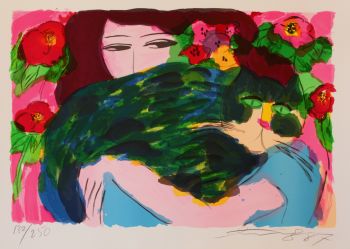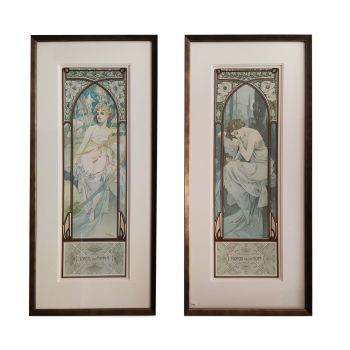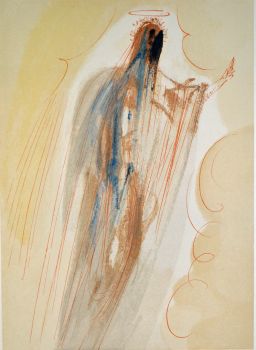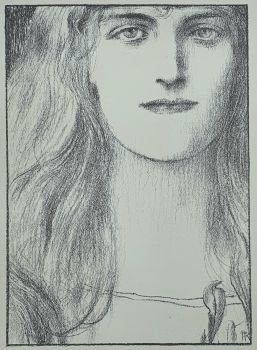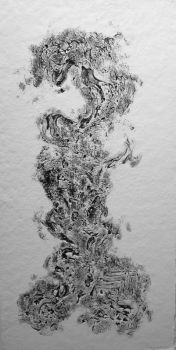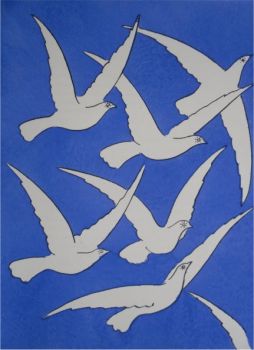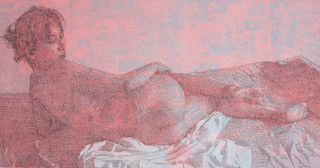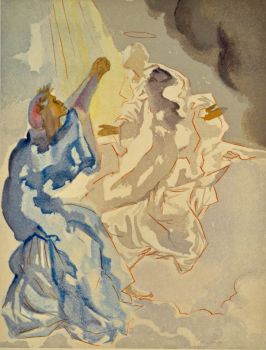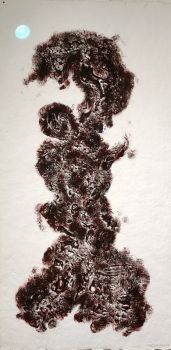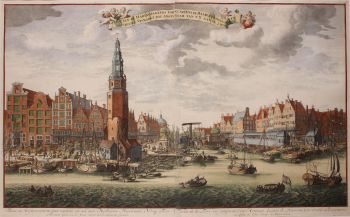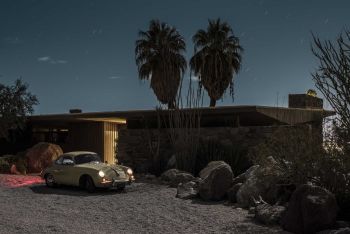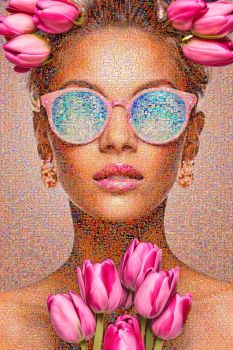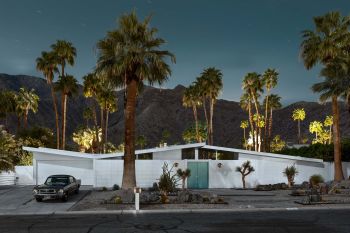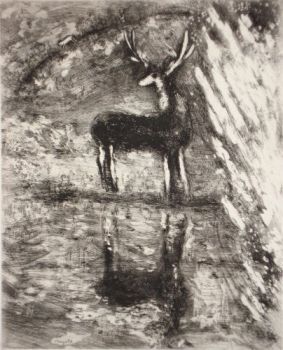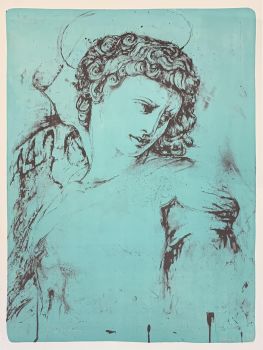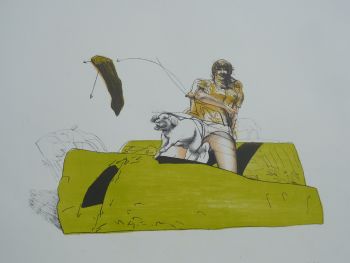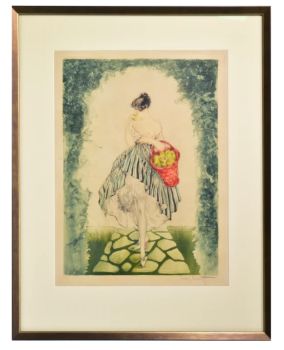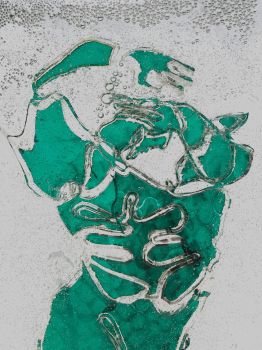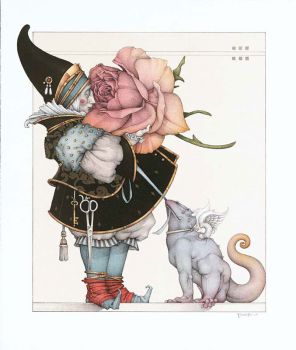丁雄泉 Tings muse; The history of Walasse Ting
In the 1970s, 1980s and 1990s of the last century, Walasse Ting's work was immensely popular in America and Europe.
The lithographs and posters had sky-high print runs. The prices of the original works on rice paper and canvas reached absolute records. For more than ten years now there has been a continuous interest in his work in China and other Asian countries, where the rediscovered work is increasingly being offered at auctions. In the Netherlands, his work was shown during an exhibition in the Jan van der Togt Museum in Amstelveen.
Time for a retrospective!
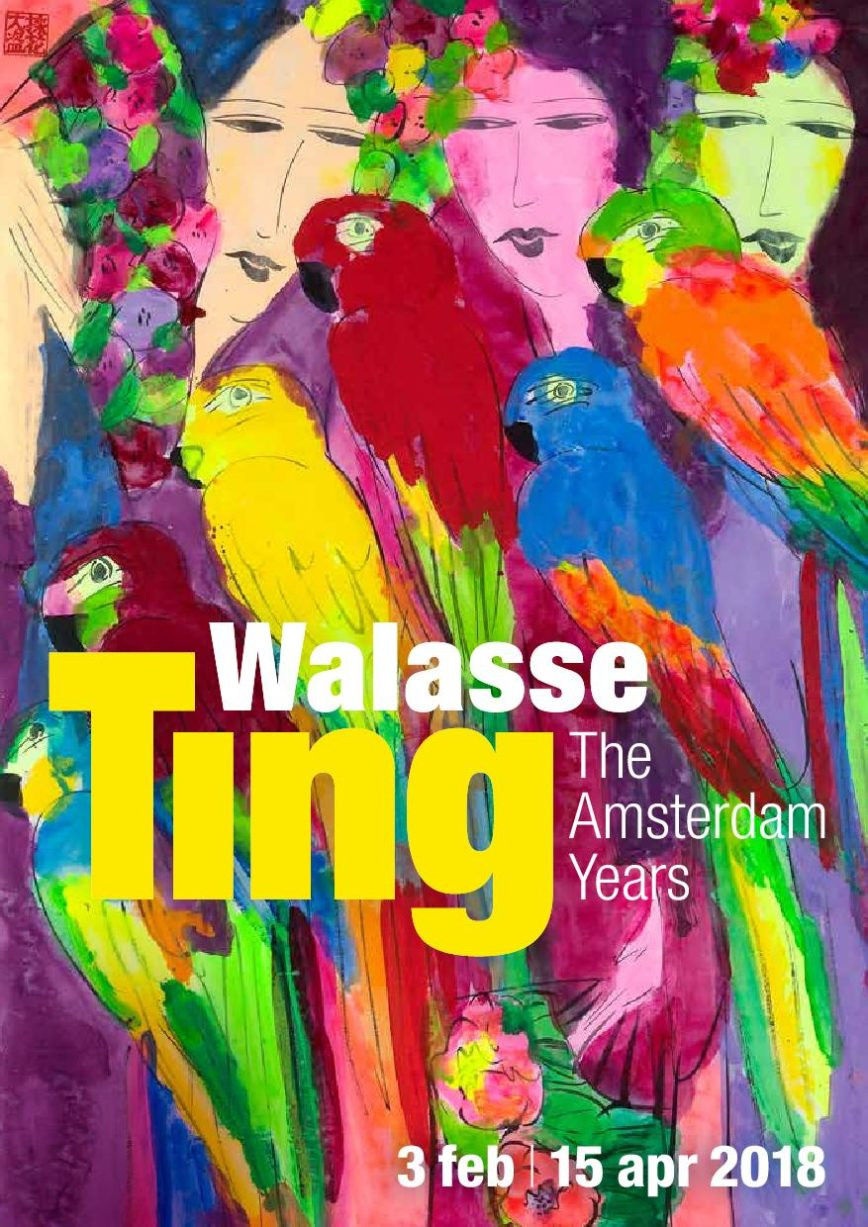
Aankondiging tentoonstelling Walasse Ting
Walasse Ting and China
Walasse Ting is born in Wuxi, 125 km northwest of Shanghai. According to Chinese tradition, parents give their child a first name that reflects the qualities and characteristics that they want for their child. This is how Tings' parents came to call their son 'Hsiung Chuen', which means so much as 'powerful and abundant flowing source'. For good balance, they added the name 'Hua la Si' ('spoiled').
Woman by Walasse Ting
Ting draws and paints from his early youth. Although he follows some lessons at the Shanghai Art Academy, the program does not have much to offer him as is often the case with opinionated and talented artists. In his early years, he can be found in the streets of his hometown Shanghai where he illuminates the sidewalks with countless chalk drawings.
In 1946 he moves, inspired by I Ching (the book of Changes), to Hong Kong where he can soon exhibit his work in a bookstore. In this period he starts selling watercolours to American collectors of Modern Art for the first time.
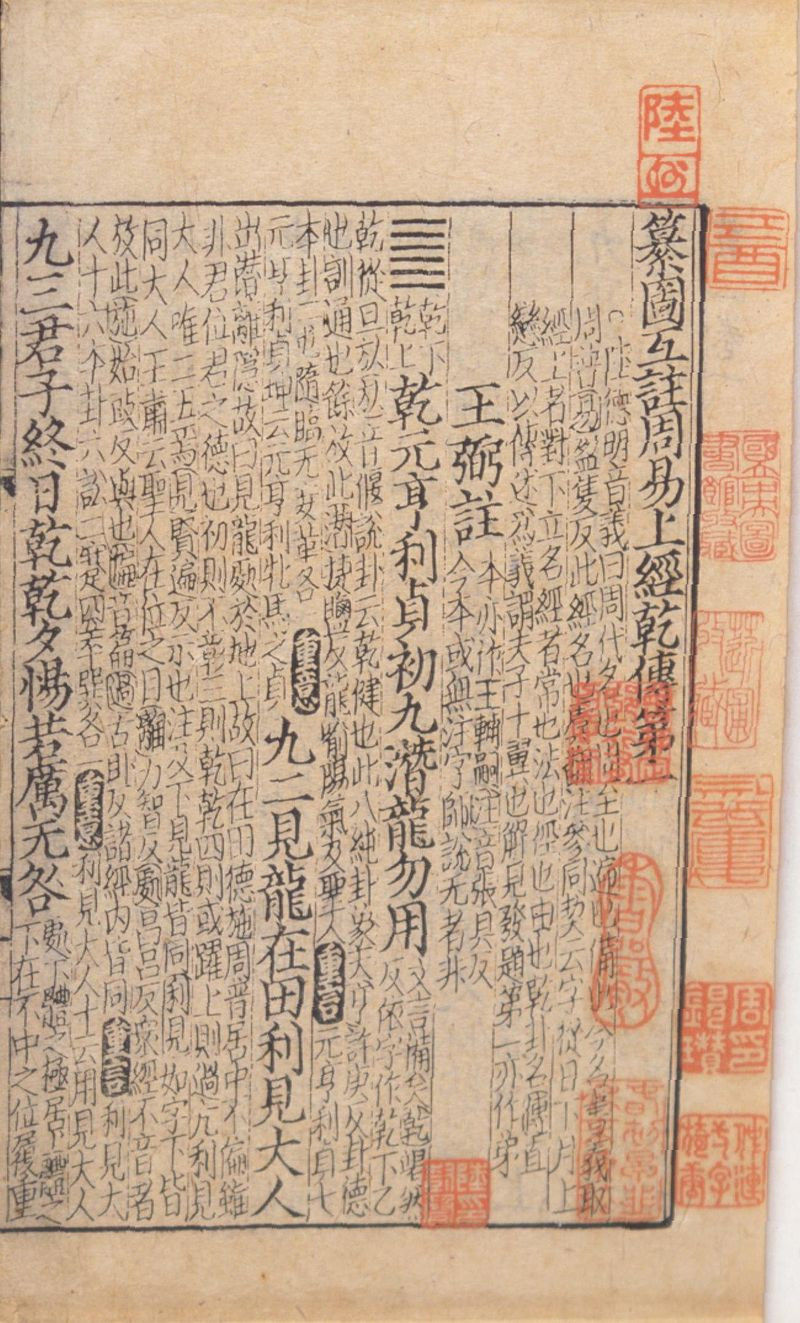
Page from a Song Dynasty (960-1279) -printed in the book of I Ching (Book of Changes)
Walasse Ting and Paris
In 1950 he travelled to France; probably motivated by this success. He disembarks in Marseilles with a cardboard suitcase and a roll of rice paper which he has wrapped in a red cloth. He arrives with only five US dollars in his pocket, without a passport and visa and he doesn’t speak French at all.
In Paris, Walasse Ting finds shelter in a small apartment in the Passage Raguinot in the 12th arrondissement. Although the condo lacks space Ting starts frantically painting huge paintings on canvas and paper. There is no place to view the result from a distance. He remains loyal to the great sizes, the physical brushes in the tradition of Chinese calligraphy and painting.
In Paris, Walasse Ting also has his first confrontation with Western abstraction, in particular with the works of Picasso and Matisse. They leave an indelible impression. In admiration for Matisse, he decides to change the last syllable of his first name Hua La Si to -sse. This is how Europe, America and the rest of the world will know him in the future as: "Walasse Ting".
Cat by Walasse Ting available at Bert Kuipers Kunsthandel
Walasse Ting and Cobra
In the Fifties,Walasse Ting's star steadily rises. He lives in poverty, but artistically he takes important steps. He exhibits in a group exhibition in the famous Parisian Facchetti gallery and befriends Pierre Alechinsky. Both find each other in oriental calligraphy.
Alechinsky brings Walasse Ting into contact with Cobra artists. Not surprising since in Cobra the link between painting and poetry is manifest in the early years of this movement.Walasse Ting is particularly interested in the work of Karel Appel with whom he exhibits at the Stedelijk Museum in Amsterdam alongside artists such as Lucebert, Asger Jorn, Christian Dotremont and the poet Bert Schierbeek in 1965. By this time Walasse Ting's poetry collection My shit and my love has already been published.
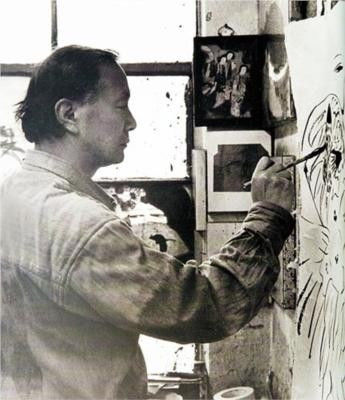
Walassse Ting at work
Walasse Ting and New York
In 1959 the American years began. Walasse Ting settles in New York, where he moves into a studio on 100 West 25th Street in Manhattan. The windows and walls of this studio are soon filled with paint that Walasse Ting splashes paint like rain on his canvas and rice paper. In these years, he meets Sam Francis. This artist introduces him to pop art and abstract expressionism. One evening, during a gathering with other artists in Francis's apartment, the idea comes up to make an overview of all current trends in the visual arts of their time.
In 1964 the legendary One Cent Life was published. The work is not only regarded as the most artistically designed book of its time but also as a compact visual and psychedelic manifesto of the sixties. In addition to the pulsating street poetry by Walasse Ting, it contains 62 loose-leaf lithographs by well-known artists from that period such as Andy Warhol, Roy Lichtenstein, Robert Indiana, Alan Davie, Tom Wesselmann, Sam Francis, Asger Jorn and Karel Appel.
'One Cent Life' has a 2000 edition which has become a real collector’s item.
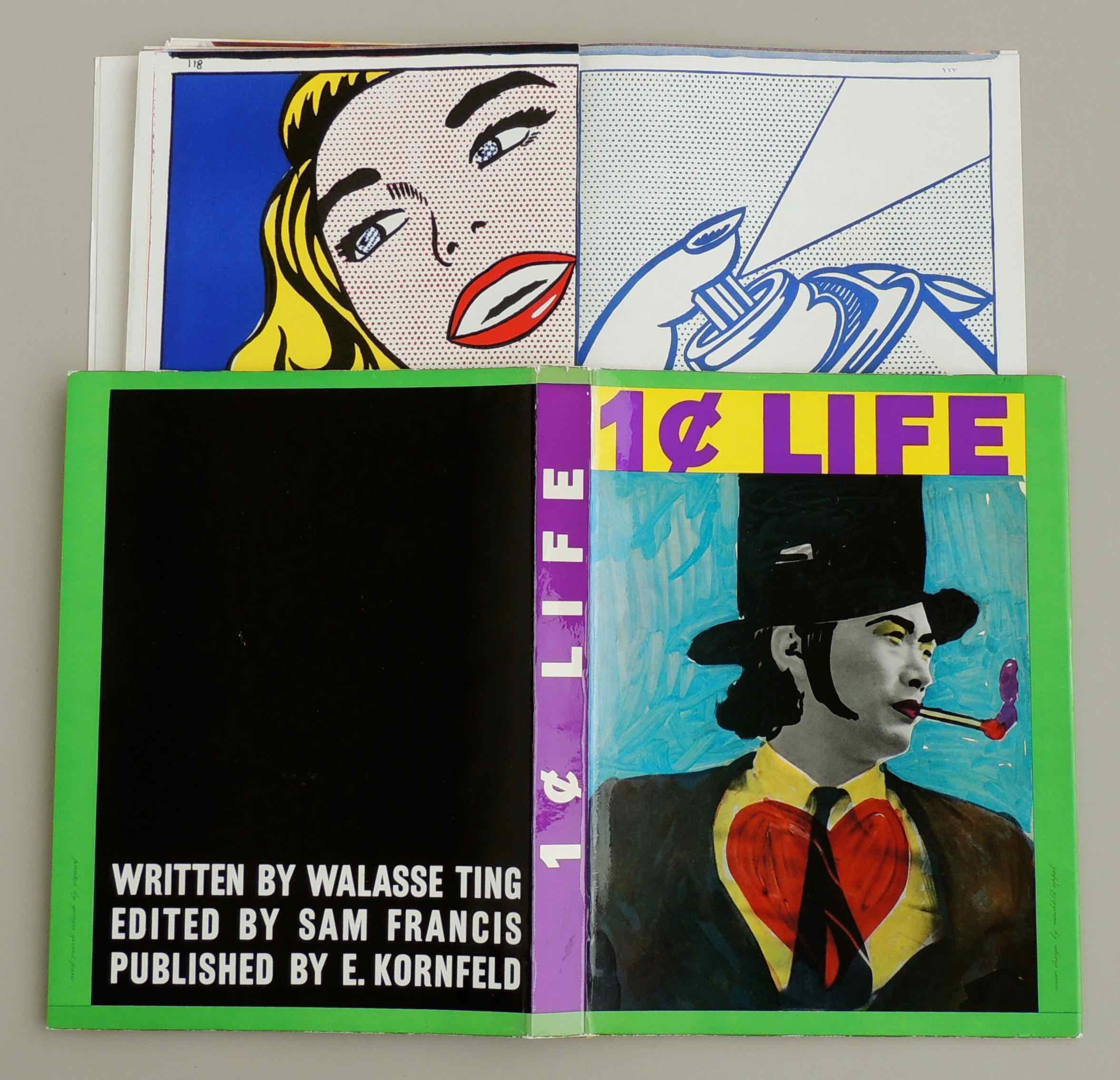
One cent Life by Walasse Ting and edited by Sam Francis - 1964
Walasse Ting in the Seventies
In the Seventies, Walasse Ting's work evolved into a pictorial synthesis; the Chinese calligraphy of the poetic word merges with the expressive images of Western abstraction. His work is also moving develops towards the figurative. He starts painting the female figure, his muse par excellence, in the evocative style that has become so familiar today's art lover.
In Walasse Ting's original artworks with acrylic paint on rice paper, in neon colours, fluorescent, it is 'always the woman' in every pose; erotising, European or Asian, surrounded by parrots, grasshoppers, cats, horses, flowers and fruit.
Horse, Woman, Parrots by Walasse Ting
Walasse Ting exhibits in all well-known galleries around the world. Every self-respecting museum in the world displays his work, from the Stedelijk Museum Amsterdam to the Museum of Modern Art and the Guggenheim in New York, from the Silkeborg Kunstmuseum in Denmark to the Israel National Museum in Jerusalem and the National Gallery of Art in Reykjavik and nowadays in museums in the People's Republic as the Chinese are buying back the works of their ‘lost son’.
Woman holding Horse by Walasse Ting
Walasse Ting becomes a striking figure in New York's street life, dressed in extravagant suits, cruising the streets in a blue or bright pink Rolls Royce. Countless muses populate his studio, near his home in Greenwich Village, sometimes as groupies, often as mistresses. Once more Walasse Ting is the spoiled boy Hua la Si.
There are copious dinners in expensive restaurants, where Walasse Ting orders all Chinese dishes available on the menu. Everyone is welcome at his table. His entourage share in his prosperity; his muses, as well as gallery holders who have his work in stock. He is warm and accessible.
Women with fans by Walasse Ting
Unfortunately, in his lesser moments, he is almost manic, hiding in an oriental silence, totally shut off. For days, sometimes weeks in a row, he is unable to work his studio. He becomes melancholic and full of homesickness for his motherland China. Then again obsessively painting, many hours and days in a row, cleared of every obstruction, detonating on paper and canvas in all colours of the rainbow.
In the seventies and eighties of the last century,Walasse Ting is one of the most important artistic US representatives. In 1984, after a journey that brings him to Tahiti and inspired him enormously like it once did Gaugain, his collection of poems Peinture sur papier de riz is published in Paris. This work contains, in addition to poems, a retrospective with 316 exotic paintings that Ting made between 1975 and 1980.
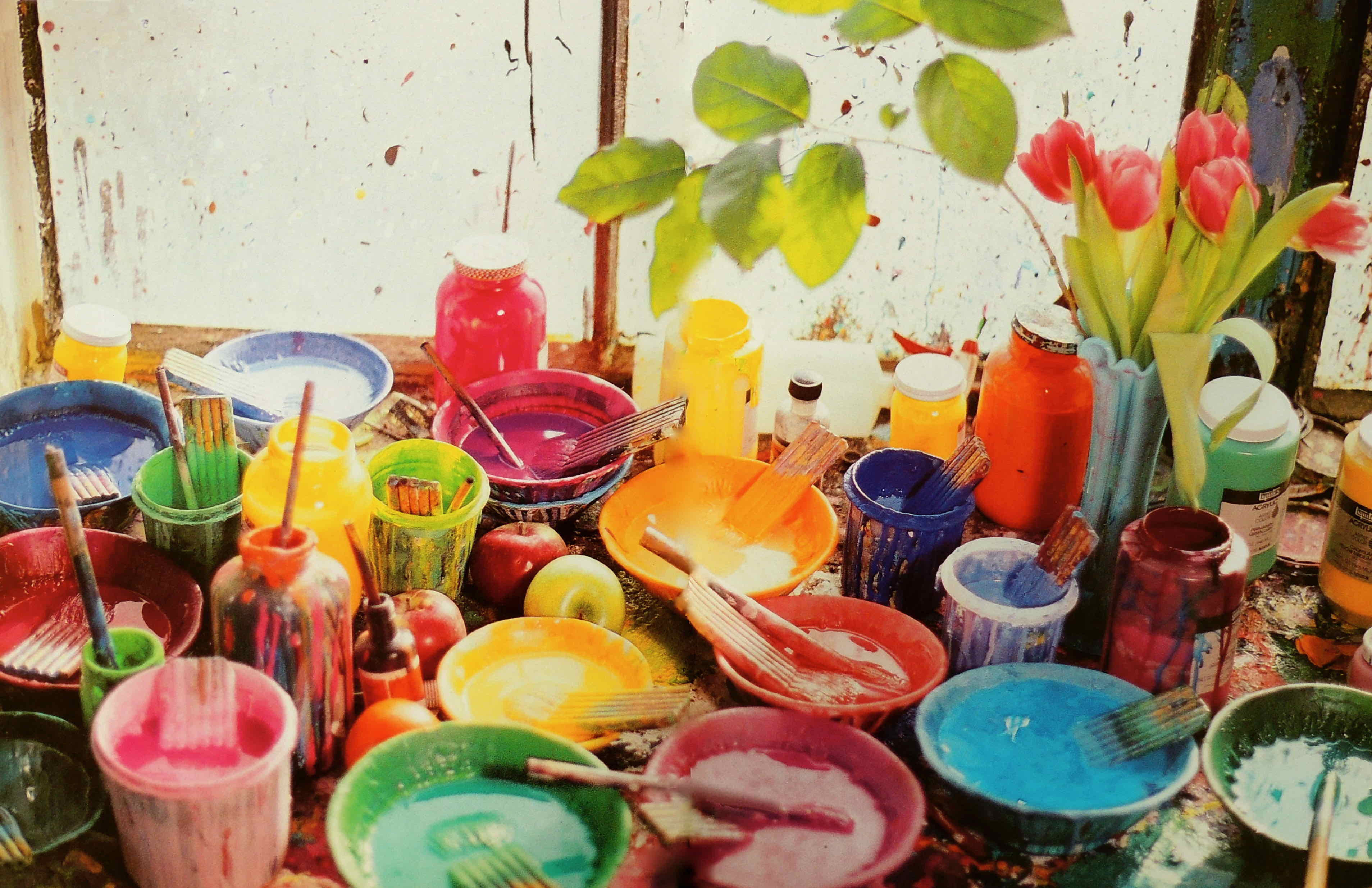
The studio of Walasse Ting in Amsterdam
Walasse Ting and Amsterdam
In 1987 after the death of his wife Nathalie in 1986, Walasse Ting goes on a trip with his son and daughter to Amsterdam. The canals remind him of the town Hangzhou in China. He likes daily life in the Dutch capital so well that he decides to live there permanently. In Amsterdam, he rediscovers his all-encompassing motif, his muse; the woman. He paints over sixty models in his studio on the Keizersgracht. They are immortalized on rice paper and canvas in acrylic, charcoal, oil and pastel. They are published in the book Jolies Dames.

The book 'Jolies Dames' with works of Walsse Ting
Walasse Ting and his last years
In 2002, fate struck. Walasse Ting is hit by a fatal brain haemorrhage. For eight years he is taken care off in a nursing home in Amstelveen, far from his native country, no longer approachable, no longer able to paint, comatose.
In 2010 his children take him back to New York where he dies within a fortnight in 2010. His orgiastic colours still vibrate and fluoresce on paintings in many private and museum collections. They are an ode to love and life that can be understood backwards but must be lived forwards. Walasse Ting lives on, celebrating life, far into the future, immortalized by his artworks.
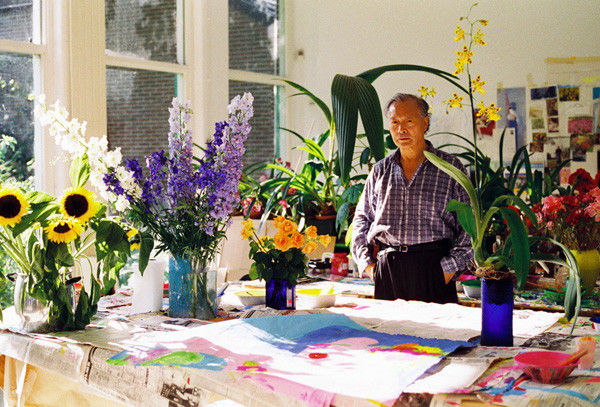
Walasse Ting in his studio in Amsterdam
Available works by Walasse Ting
The works for sale in the Netherlands which can be seen on Walasse Ting artist page, mostly date from his Amsterdam period. The works on rice paper that are for sale at Bert Kuipers Kunsthandel have a very special provenance; they come from the collection of one of Ting's Amsterdam muses, Els.
Apart from his pictures of females they include a fixed repertoire of motifs: cats, flowers, parrots, fruit, grasshoppers and horses. Besides the exuberant colour, there is room for the stillness in diluted ink or paint on ultra-thin rice paper, small sized work in the Chinese tradition, aus einem Guss (in one stroke). The majority is signed in the form of an ideogram, a Chinese stamp, with character (s) in red lacquer that reflects one of Ting's many poetic artists' names.
The art dealership also has a very special item in her collection: a 24-page heartbreaking love letter that Ting painted in New York.
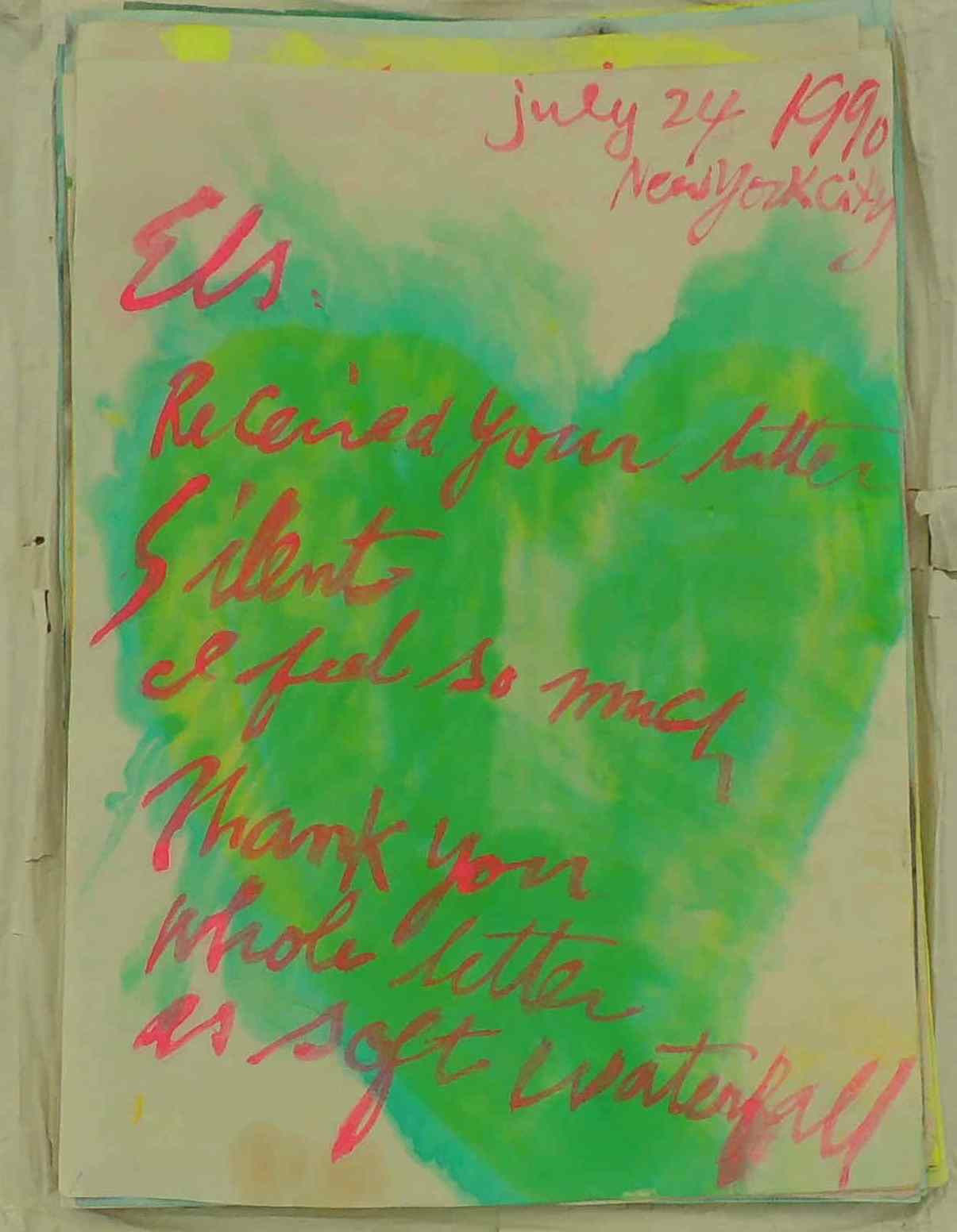
Love Letter for his muse Els by Walasse Ting dated New York, July 24, 1990
Walasse Ting as a Poet
Ting is less known as a poet. His verses derive from ideograms. They seem to consist of 'word characters', loose building blocks in images. Tied together, stacked on top of each other without the grout of grammar, they create a curiously naïve but concise English. Walasse Ting by Walasse Ting, an autobiography in poetry testifies to this.
If desired, Bert Kuipers Kunsthandel can intermediate in the acquisition of the poetry collection One Cent Life. This is a HC copy (hors commerce) with order and signature of Walasse Ting in blue ink, containing all original 62 lithographs.
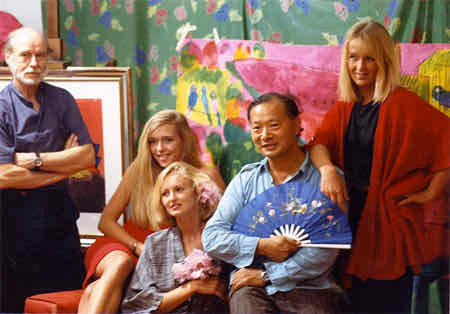
Walasse Ting with Corneille and his family
Walasse Ting by Walasse Ting (1929 – 2000)
1 year old first time sing song
2 years old first time stand up
3 years old first time catch grasshopper
4 years old first time fly kite
5 years old first time draw dragonfly
6 years old first time smell flower
7 years old first time piss under rain
8 years old first time see fire burn house
9 years old first time eat honey
10 years old first time see locomotive
11 years old first time see man and woman make love
12 years old first time see grandfather die
13 years old first time masturbate in bed
14 years old first time dance in ballroom
15 years old first time write love letter
16 years old first time falling in love
17 years old first time make love in the dark
18 years old first time left China
19 years old first time sold watercolor
20 years old first time make love with a prostitute
21 years old first time saw one man show
22 years old first time take big boat to Paris
23 years old first time make love with white girl
24 years old first time drink champagne
25 years old first time fell melancholy
26 years old first time lovesick and homesick
27 years old first time borrow money
28 years old first time not believe anything
29 years old first time write a poem
30 years old first time come to america
31 years old first time make love with a black girl
32 years old first time eat hot dog
33 years old first time married
34 years old first time grow mustache
35 years old first time wash dishes
36 years old first time worrying pay rent
37 years old first time have daughter
38 years old first time buy color television
39 years old first time buy life insurance
40 years old first time have son
41 years old first time naked in rain
42 years old first time wake up in night
43 years old first time hear mother drop dead
44 years old first time see father sleep inside coffin
45 years old first time become u.s. citizen
46 years old first time smell money like bullshit
47 years old first time see sun is square
48 years old first time know life is round
49 years old first time bought a crystal peach
50 years old first time eat green snake
51 years old first time boutht a letter by Gaugin
52 years old first time to Tahiti
53 years old first time drive a blue rolls-royce
54 years old first time have a cat
55 years old first time rainbow for breakfast
56 years old first time shower with a symphony
57 years old first time cry wife died
58 years old first time discover look like panda
59 years old first time buy a bottle perfume
60 years old first time make love with a virgin.
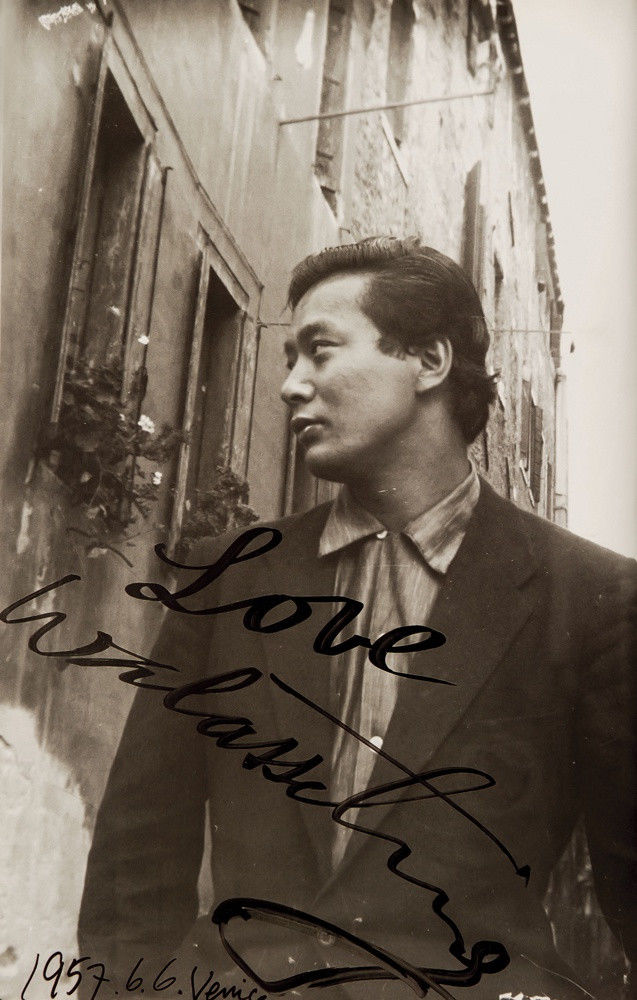
Walasse Ting In Venice
For more works of Wallasse Ting have a look here at Gallereaese!
To see them in 'real life' make visit or make an appointment with Bert Kuiper Kunsthandel


